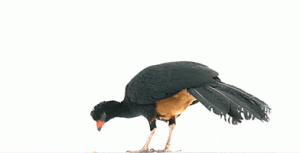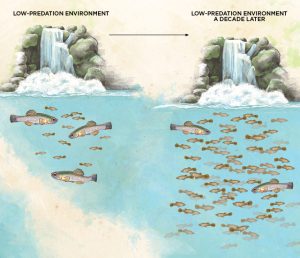
AP Biology Unit 7.1: Introduction to Natural Selection
Evolution and Natural Selection: The Basics
Evolution refers to the process by which populations of living organisms change over time, with these changes driven by variations in their genetic makeup. At the heart of evolution is natural selection, often simplified as “survival of the fittest.” This fundamental mechanism allows certain traits to become more or less common depending on how well they help organisms survive and reproduce. In this unit, we delve into how natural selection works and why it plays a key role in evolution.
Table of Contents
ToggleEver Heard of “Survival of the Fittest”?
Natural selection is a core concept of evolution that can change the phenotypic ratios of species and populations. In simple terms, natural selection means that individuals with traits that provide an advantage are more likely to survive and pass those traits on to their offspring. Over time, advantageous traits become more common in the population.
Darwin’s Theory of Evolution
The theory of evolution by natural selection was first proposed by Charles Darwin. After his famous voyage on the HMS Beagle to South America, Darwin developed three major propositions that became the foundation of evolutionary biology:
Species change over time
Divergent species share a common ancestor
Natural selection is the mechanism that produces these changes in species and populations
In a population, some variations are beneficial for survival and reproduction. According to Darwin’s theory, these advantageous variations are more likely to be passed on to future generations. Over time, this process results in changes in the population’s genetic makeup and can even lead to the evolution of new species. This phenomenon is often referred to as adaptation.
Natural selection works by differentially determining the survival and reproduction of individuals with different traits. Those with beneficial traits are more likely to survive, reproduce, and pass on their genes, ultimately shaping the population’s traits over many generations.
Darwin’s Finches: A Case Study
One of the most famous examples of natural selection is Darwin’s finches. During his visit to the Galapagos Islands, Darwin observed that each island had its own unique finch species, all with different beak sizes and shapes adapted to specific food sources. For instance, finches with stronger, heavier beaks were better suited for cracking hard seeds, while those with slender beaks were better at probing for insects.
Darwin concluded that these differences in beak shape were the result of adaptation to different environments on each island. Over time, the original finch species diverged into multiple species, each adapted to a different niche—all due to natural selection favoring traits that best suited the available resources.
This observation led Darwin to further develop his Theory of Evolution by Natural Selection, which explains how populations adapt to their environment and evolve into new species over time.

Evolutionary Fitness: What Does It Mean?
Evolutionary fitness refers to how well a particular trait or phenotype helps an organism survive and reproduce in its environment. Traits that enhance survival are more likely to be passed on, resulting in a higher frequency of that trait in the population.
For example, camouflage can greatly enhance an organism’s fitness by helping it blend into its environment and avoid predators. Individuals with poor camouflage are more likely to be seen and eaten, while those that blend in well are more likely to survive and reproduce. Over time, the frequency of advantageous traits (like camouflage) increases in the population.
Both biotic (living) and abiotic (non-living) factors can affect natural selection.
Biotic factors include interactions with predators, prey, and other organisms.
Abiotic factors involve elements like temperature, soil, and physical environment.
These factors work together to influence the traits that are favored through natural selection.
The Environment’s Role in Natural Selection
The environment significantly impacts both the rate and direction of evolution.
A stable environment often means fewer changes in evolutionary pressures, resulting in a slower rate of evolution. In contrast, fluctuating environments can introduce new selective pressures that drive faster evolutionary changes.
Biotic factors like the introduction of new predators or changes in vegetation can drive natural selection.
Abiotic factors, such as changes in temperature or resource availability, also impact which traits are favored.
For example, Darwin’s finches experienced different selective pressures based on the types of food available on each island. Over generations, their beak shapes adapted to the available resources, demonstrating how environmental factors shape natural selection.
Summary: Natural Selection in Action
Natural selection is a powerful process that drives the evolution of species by favoring traits that enhance survival and reproduction. Traits that increase an organism’s evolutionary fitness become more common over time, while disadvantageous traits tend to disappear. This process can lead to the adaptation of species to their specific environments and even result in the emergence of new species.
Key Takeaways:
Natural selection is a mechanism of evolution that favors traits enhancing survival and reproduction.
Darwin’s finches are a prime example of how different environments can lead to the adaptation of traits within populations.
Evolutionary fitness determines which traits are passed down and become more common in a population.
Both biotic and abiotic factors influence natural selection, which shapes the evolution of species.
By understanding how natural selection works, we gain insight into how life evolves and adapts, ultimately giving rise to the incredible diversity we see today.
Recent Posts
- 1.4 Understanding and interpreting a narrator’s perspective
- 1.3 Understanding how a story’s structure affects interpretations
- 1.2 Identifying and interpreting setting
- 1.1 Interpreting the role of character in fiction
- Unit 1 Overview: Introduction to Short Fiction
- Laws of Indices – Number & Algebra – IB Mathematics AA HL
- Standard Form – Number & Algebra – IB Mathematics AA HL
- 9.2 Crafting an argument through stylistic choices like word choice and description
- 9.1 Strategically conceding, rebutting, or refuting information
- Unit 9 Overview: Developing a Complex Argument
- 8.4 Considering how style affects an argument
- 8.3 Considering how all choices made in an argument affect the audience
- 8.2 Considering how sentence development and word choice affect how the writer is perceived by an audience
- 8.1 Choosing comparisons based on an audience
- Unit 8 Overview: Stylistic Choices
Choose Topic
- ACT (17)
- AP (20)
- AP Art and Design (5)
- AP Physics 1 (1)
- AQA (5)
- Artificial intelligence (AI) (2)
- Banking and Finance (6)
- Biology (13)
- Business Ideas (68)
- Calculator (72)
- ChatGPT (1)
- Chemistry (3)
- Colleges Rankings (48)
- Computer Science (4)
- Conversion Tools (136)
- Cosmetic Procedures (50)
- Cryptocurrency (49)
- Digital SAT (3)
- Edexcel (4)
- English (1)
- Environmental Science (2)
- Exam Updates (1)
- Finance (17)
- Fitness & Wellness (164)
- Free Learning Resources (209)
- GCSE (1)
- General Guides (40)
- Health (107)
- History and Social Sciences (152)
- IB (1)
- IGCSE (2)
- Image Converters (3)
- IMF (10)
- Math (39)
- Mental Health (58)
- News (8)
- OCR (3)
- Past Papers (463)
- Physics (5)
- SAT (39)
- Schools (3)
- Sciences (1)
- Short Notes (5)
- Study Guides (28)
- Syllabus (19)
- Tools (1)
- Tutoring (1)

